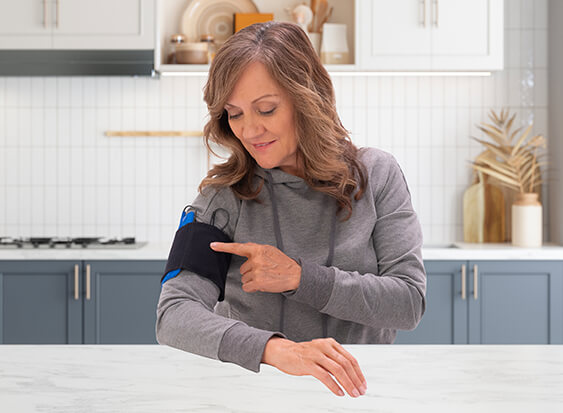Get the Facts on Chronic Pain
40%
Up to 40% of the U.S. population suffers from chronic pain and is often at risk for developing further complications. 1, 2
25%
As many as one in four patients receiving long-term opioid therapy in a primary care setting struggle with opioid addiction. 4
$635 Billion
$635 Billion in annual costs are associated
with chronic pain. 3
20 Million
At least 20 million Americans are estimated to have some form of peripheral neuropathy, a key contributor to chronic pain. 5
Our Solution
The Freedom® Peripheral Nerve Stimulator (PNS) and Spinal Cord Stimulator (SCS) Systems involve a minimally invasive, percutaneous procedure that includes an implanted stimulator, external transmitter assembly, and customized therapy for your patients to receive pain relief.

Broad Coverage
Each implanted neurostimulator contains a 4-contact or 8-contact electrode array and a connected receiver. The separate receiver is connected intraoperatively and supplies broad coverage, allowing for flexibility in challenging areas during surgical placement.
Power
High Frequency-Electromagnetic Coupling (HF-EMC) delivers energy from the external transmitter assembly to the implanted neurostimulator. HF-EMC technology provides continuous broad coverage area up to 6cm in depth*, allowing flexible implantation without losing device connectivity.
*Internal testing on file with Curonix.
*Internal testing on file with Curonix.
No Implanted Battery
Powered by an external transmitter assembly giving patients an easy-to-use remote control to power their device on and off without the need for an implanted battery.
Purposefully Designed Wearables
The wearable is customized to fit the Curonix product, providing patients with the freedom to seamlessly return to their daily activities without experiencing loss of connectivity.
Professional Education
Interested in getting in-depth knowledge about our products? View our educational opportunities.
Learn More
Provider Resources
Get access to additional educational content, including videos and more.
Learn More
References:
1
Dahlhamer J, Lucas J, Zelaya C, et.al. Prevalence of Chronic Pain and High-Impact Chronic Pain Among Adults – United States, 2016. MMWR Morb Mortal Wkly Rep 2018;67:pg.1
2
Peripheral Neuropathy. National Institute of Neurological Disorders and Stroke. Retrieved from NINDS website: 2023. https://www.ninds.nih.gov/health-information/disorders/peripheral-neuropathy#
3
U.S. Department of Health and Human Services (2019, May). Pain Management Best Practices Inter-Agency Task Force Report: Updates, Gaps, Inconsistencies, and Recommendations. Retrieved from U. S. Department of Health and Human Services website: https://www.hhs.gov/sites/default/files/overview-pmtf-final-report-fact-sheet_508.pdf
4
U.S. Department of Labor. Risk Factors for Opioid Misuse, Addiction, and Overdose. Retrieved from U. S. Department of Labor website: https://www.dol.gov/agencies/owcp/opioids/riskfactors
5
https://nationalpain.org/fast-facts-about-pain

